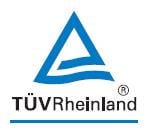Breaking from Tradition
Historically, the disciplines of safety and security have often been isolated from one another, including separate regulation, practitioners, and documentation. Nuclear safety cases, for example, still explicitly exclude events caused by war, terrorism and sabotage, tacitly invoking a plea that such events are unpredictable.
Perhaps as a result of the rising prominence of global terrorism, there are signs that this position is beginning to change.
The introduction of modern Health, Safety & Environmental Cases throughout much of the international oil and gas industry during the middle to late 1990s also saw the initial consideration of security threats such as piracy and sabotage, especially in more volatile regions. Following the events of 9/11, the industry has placed a much greater emphasis on security, and many operators now produce Health, Safety, Security & Environmental Cases. These fully integrate security threats take into account conventional hazards, making use of similar techniques for analysing consequences and assessing risk (e.g. using the same risk matrix for personnel hazards).
In a separate development, the UK’s Office for Civil Nuclear Security has been transferred from the Department of Trade and Industry to the Health & Safety Executive, which acts as the government’s nuclear safety regulator. So far, this has not resulted in a move to integrate security and safety regulation, but this may well be one of the possible motives for this reorganisation.
Following this early trend, TÜV Rheinland’s Risktec has acquired IMS, based in Kent, UK. This group currently focuses on maritime security, but through a network of specialists also advises on security in other sectors such as civil nuclear and oil & gas.
Implications of Integrating Safety & Security
In many ways, the extension of safety cases to incorporate security threats is quite natural. The assessment techniques to identify hazards, consequences, controls and risks to people, plant and the environment are similar in principle, if not in detail.
The key differences are:
- Limited published historical data from which to derive security threats to facilities
- The involvement of security experts in identifying and postulating security threats and measures
- Analysis of the effects of explosives, weapons or nuclear, biological or chemical attack
- The dynamic nature of the security threat, which typically means that the likelihood of security hazards can vary, sometimes on a daily basis, and should be matched by a varying set of security measures.
- The sensitivity of related documentation, which for obvious reasons should be strictly controlled.
In conclusion, as industries move towards greater integration of Health, Safety, Security and Environmental aspects, issues will inevitably arise where a balance needs to be struck. In this respect, a common, systematic approach will help greatly to inform the decision-making process.
Speak to one of our experts on how you can integrate your safety and security systems today:



